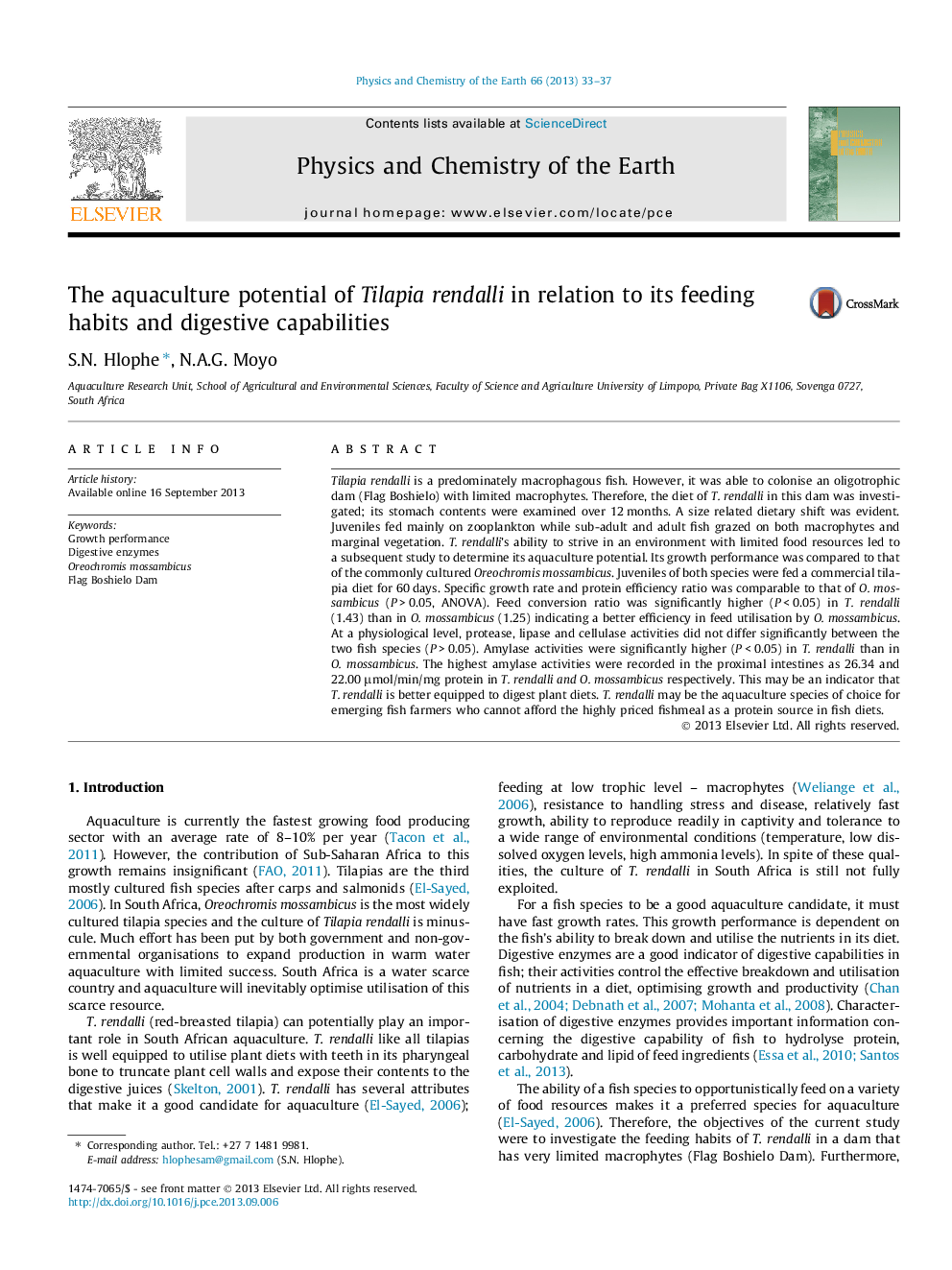| Article ID | Journal | Published Year | Pages | File Type |
|---|---|---|---|---|
| 4721022 | Physics and Chemistry of the Earth, Parts A/B/C | 2013 | 5 Pages |
•Tilapia rendalli is an opportunistic feeder that diversifies its diet when resources are scarce.•Oreochromis mossambicus showed better feed conversion efficiency than T. rendalli.•Higher amylase activities were observed in T. rendalli than in O. mossambicus.•T. rendalli may be better equipped to utilise plant based diets than O. mossambicus.
Tilapia rendalli is a predominately macrophagous fish. However, it was able to colonise an oligotrophic dam (Flag Boshielo) with limited macrophytes. Therefore, the diet of T. rendalli in this dam was investigated; its stomach contents were examined over 12 months. A size related dietary shift was evident. Juveniles fed mainly on zooplankton while sub-adult and adult fish grazed on both macrophytes and marginal vegetation. T. rendalli’s ability to strive in an environment with limited food resources led to a subsequent study to determine its aquaculture potential. Its growth performance was compared to that of the commonly cultured Oreochromis mossambicus. Juveniles of both species were fed a commercial tilapia diet for 60 days. Specific growth rate and protein efficiency ratio was comparable to that of O. mossambicus (P > 0.05, ANOVA). Feed conversion ratio was significantly higher (P < 0.05) in T. rendalli (1.43) than in O. mossambicus (1.25) indicating a better efficiency in feed utilisation by O. mossambicus. At a physiological level, protease, lipase and cellulase activities did not differ significantly between the two fish species (P > 0.05). Amylase activities were significantly higher (P < 0.05) in T. rendalli than in O. mossambicus. The highest amylase activities were recorded in the proximal intestines as 26.34 and 22.00 μmol/min/mg protein in T. rendalli and O. mossambicus respectively. This may be an indicator that T. rendalli is better equipped to digest plant diets. T. rendalli may be the aquaculture species of choice for emerging fish farmers who cannot afford the highly priced fishmeal as a protein source in fish diets.
